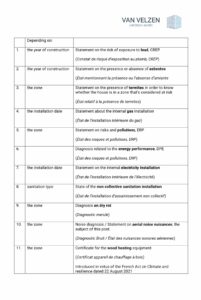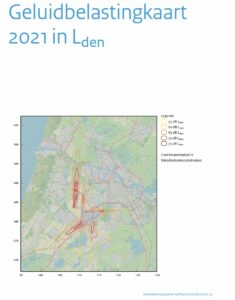Dream home near an airport, Part 2 : the French perspective in 10 questions and answers
I recently wrote a post about a Dutch case in which the seller had failed to inform the buyer on exposition to noise due to an airport located nearby. The court deemed that, in order to be able to cancel the buying agreement due to error, the buyers should have explicitly informed the seller that the absence of aerial noise nuisance was crucial for them.
In France this case would have had a different outcome. Since the first of June 2020, a seller of real estate is legally obliged to provide the buyer with information on this topic pursuant to the planning code.
This obligation also applies to lessors of real estate.
Hereafter I will explain what the duty of notification of a seller of real estate means.
- What type of real estate is at stake?
- Residential or professional buildings.
- Building plots.
- What is the duty of notification about?
It’s about the obligation to provide information on the exposure to noise in real estate transactions in designated airport areas.
- What does this duty entail?
If the real estate is located in a designated area the buyer must receive a noise diagnosis of the real estate on the basis of a standard form.
- As a seller, how do I know if my real estate is located within a designated area?
By consulting the PEB / noise exposure plan online, which is publicly accessible.
- What is the noise diagnosis for?
Its purpose is to inform the buyer.
- What happens with the form containing the noise diagnosis?
The form is added to the DDT / technical diagnosis file.
Subsequently, this file is attached to the buying agreement and the deed of transfer.
- Which penalties may apply to the seller if he omits to provide the noise diagnosis or submits a false noise diagnosis?
The seller can be held liable. The buyer can claim cancellation of the sale, decrease of the purchase price or damages.
- Which penalties may apply to the notary if the seller omits to provide the noise diagnosis or submits a false one and the civil-law notary is aware of this?
The civil-law notary can be held liable. The buyer can claim damages, for instance.
- Why is it important to know to which extent a place is exposed to aerial noise nuisances?
- Health
Noise nuisance and sleep disturbance remain significant, even with such a decrease.
- Value of the real estate
Aerial noise nuisance has a negative impact on the value. French publications, one of which was conducted by a university, estimate this impact to be about 20%.
- What else is in the file with the technical diagnosis, for instance when one purchases a house?
When buying a house, the following information must be included in the file with the technical diagnosis (DDT):
Depending on the situation the seller must also provide a booklet with information on the property, CIL.
The table above under 10 shows that in France a seller of real estate must provide many documents due to his notification duty. In the Netherlands a seller of real estate is only obliged to provide an energy label, which is an obligation stemming from a European directive.
Noise exposure plans in France
As stated above, noise exposure plans (PEB) are accessible to everyone online in France.
Here is an example of such a plan. Which location is concerned?
Noise exposure plans in the Netherlands
The online noise exposure plan of Schiphol airport is accessible to everyone. This is what it looks like:
The noise exposure plans of other airports in the Netherlands are more difficult to find. One can contact the appropriate authorities to consult them.
Duty of notification of exposure to noise, the Netherlands and France
As my previous post showed the Netherlands have a different definition of the duty of the notification of the seller related to noise exposure than France. In the Dutch case I described the court ruled that the buyers should have explicitly informed the seller that the absence of aerial noise nuisance was crucial for them. In France a seller must inform a buyer on aerial noise nuisance if the real estate is located in the designated area of an airport.
Will the Netherlands follow the French example?
Comparative law broadens one’s perspective, that’s one of its fascinating aspects. In this case too: there are various way to define the seller’s duty to provide information on aerial noise nuisances. I imagine that the buyers in the case I described earlier deem the Netherlands should retroactively follow France’s example.
Please feel free to contact me for more information on this topic.
(Image: Unsplash, Bastien Nvs, merely for illustration purposes)




